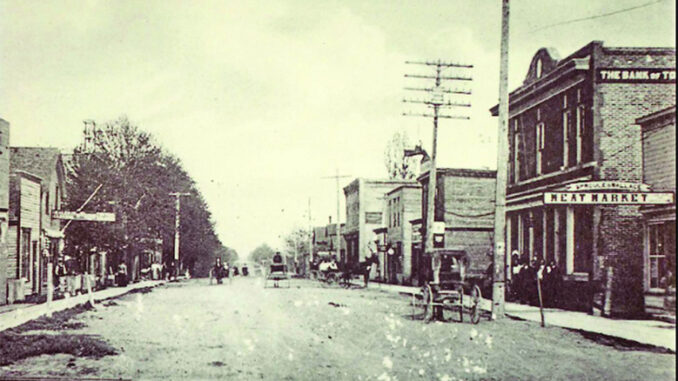
By Blake Ellis, Local Journalism Initiative Reporter, The Independent
Christine Sydorko says a riot which drove African Americans from Oil Springs should not be swept under the carpet.
So, the education program coordinator of the Oil Museum of Canada put together a program for local educators to understand this part of Black history in Lambton County.
While some books chronicle the race riot which drove the Blacks from Oil Springs, it’s not a well known event. At the time, newspapers labeled the riot as “disgraceful.”
Sydorko says it would have been a cold and wet night on March 14, 1863, when a group of about 100 people gathered on one end of the village to form up, appoint a captain and then make their way to the black community on the outskirts of town.
An influx of labourers came to Oil Springs after 1858 to find work in the oil fields, including Black workers from Dresden, Chatham and Amherstburg.
But black labourers had difficulty getting a job, so they would work for reduced rates of pay and longer hours than their white counterparts. The practice raised tensions and the Black workers and their families kept their distance, living away from the established white community on Centre Road.
That night in March, racial tensions were at a boiling point after Mrs. Justin Bradley, the wife of the proprietor of the boarding house, the Royal George, was pushed off a sidewalk by a Black labourer.
The mob made their way to Centre Street and roused the black families from their sleep in the cold dark night. They told them to leave the community, and started torching their homes. Many Black families fled into the woods with only the clothes on their back. There was even speculation there could have been a lynching although newspaper accounts later said one person was seriously injured.
The mob accomplished their goal – the Black community left Oil Springs after the riot, returning to their communities in Kent and Essex counties.
While the details of the riot itself were recorded, Sydorko set to work to find out what happened after the riot.
She first heard of an account of the riot five years ago from a newspaper article. There was very little detail about the event. So, during the pandemic as many newspapers around the world were being digitized, Sydorko went to find more details.
While there were few accounts in Canadian publications, American newspapers reported on the riot including The Chicago Tribune, The Detroit Free Press and The Douglass Monthly, a newspaper published by famed abolitionist and former slave Frederick Douglass.
Sydorko found a number of constables were sworn in that night to bring the riot under control. Three of the rioters were captured.
One man, John Lavins, an Irish widower from Lambton County was sentenced two years to the Provincial Penitentiary of Upper Canada, later renamed the Kingston Penitentiary. The penitentiary was in the process of being built, so Lavins would have spent his time behind bars on the construction crew.
Since Lavins was convicted of a felony, under English law, his land and goods would have been confiscated upon his conviction.
One other ringleader went to trial, but he was from a wealthy family, and was not convicted. Sydorko speculated his wealth allowed him not to be punished, whereas nobody liked the Irish in those days.
Finding the information about the aftermath wasn’t easy. There are few details of the court case, as records were stored in the Petrolia Town Hall, which was later consumed by fire. Sydorko gathered much of her information from the intake rolls at the Kingston Penitentiary.
And as she did her research, Sydorko still found race to be a barrier. Often there was push back with some people saying the riot didn’t happen or that Black people did not work in the oil fields of Oil Springs.
“This is just ridiculous,” said Sydorko.
Sydorko hopes the educational program which can be found on the Oil Museum’s website will be well used by schools and even community to help right the record.
“Canada could have been a welcoming haven, but we were not that,” said Sydorko, to the many runaway slaves who found freedom north of the border. “I no longer want it to be swept under the carpet.”
